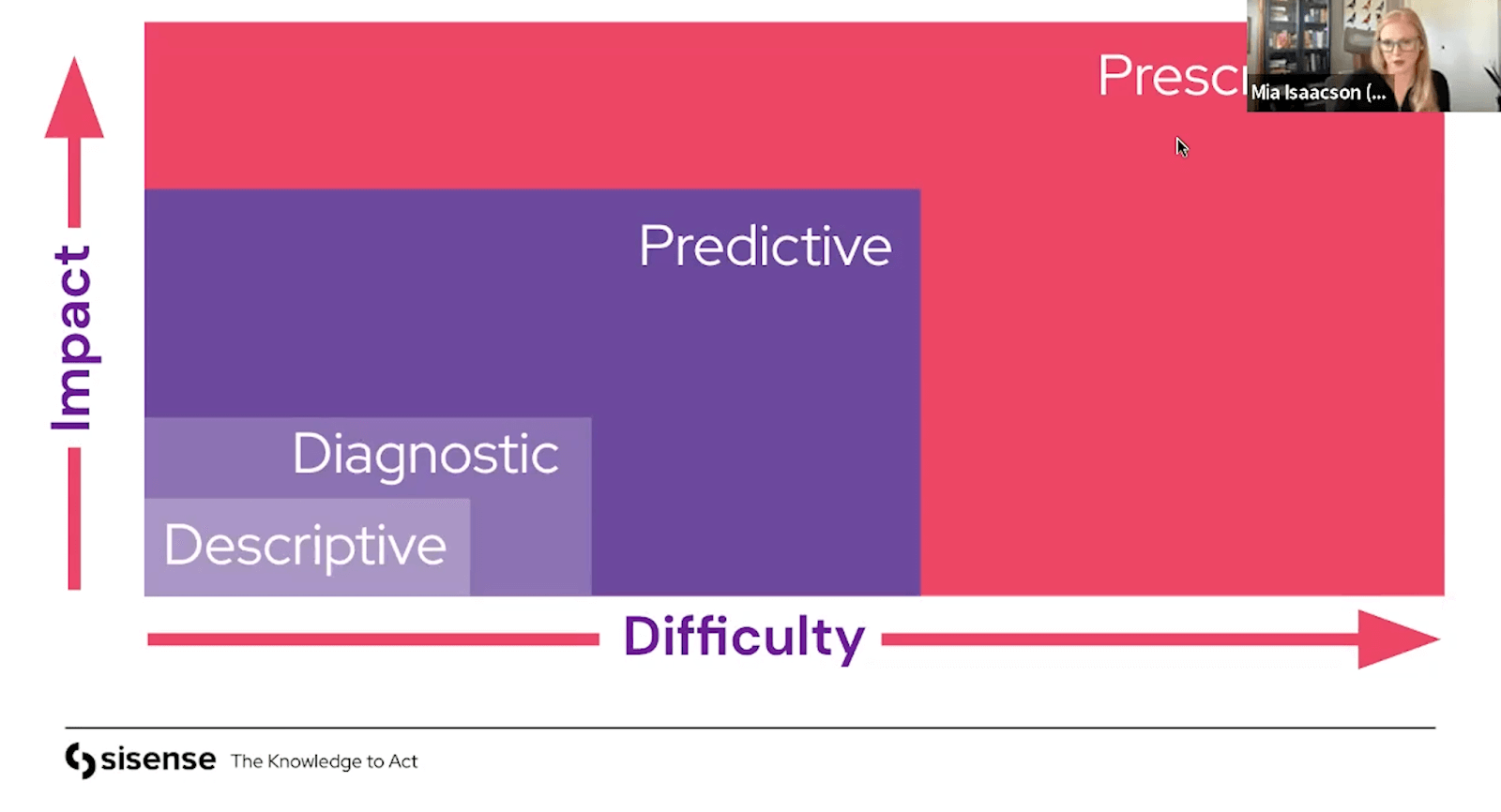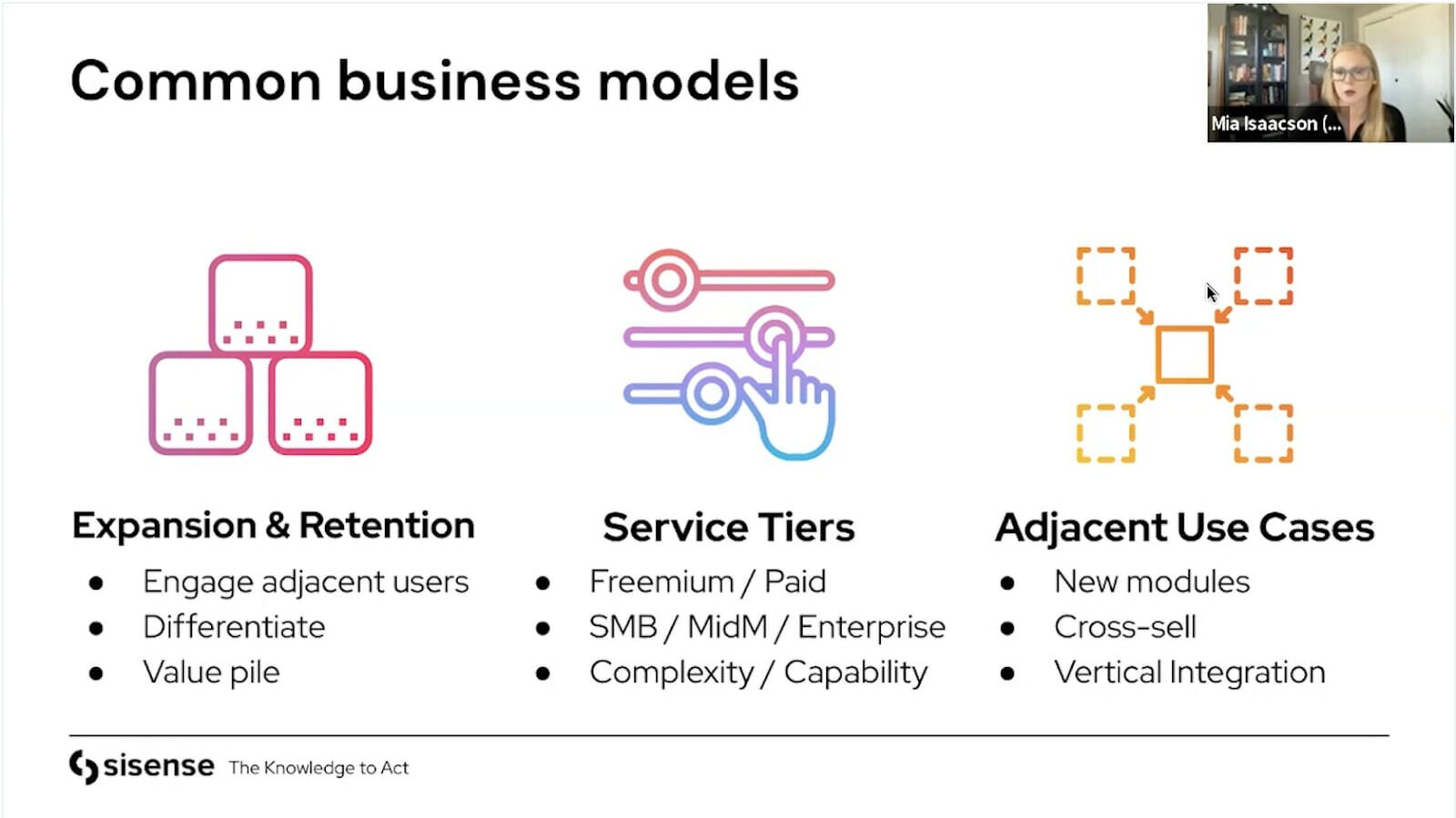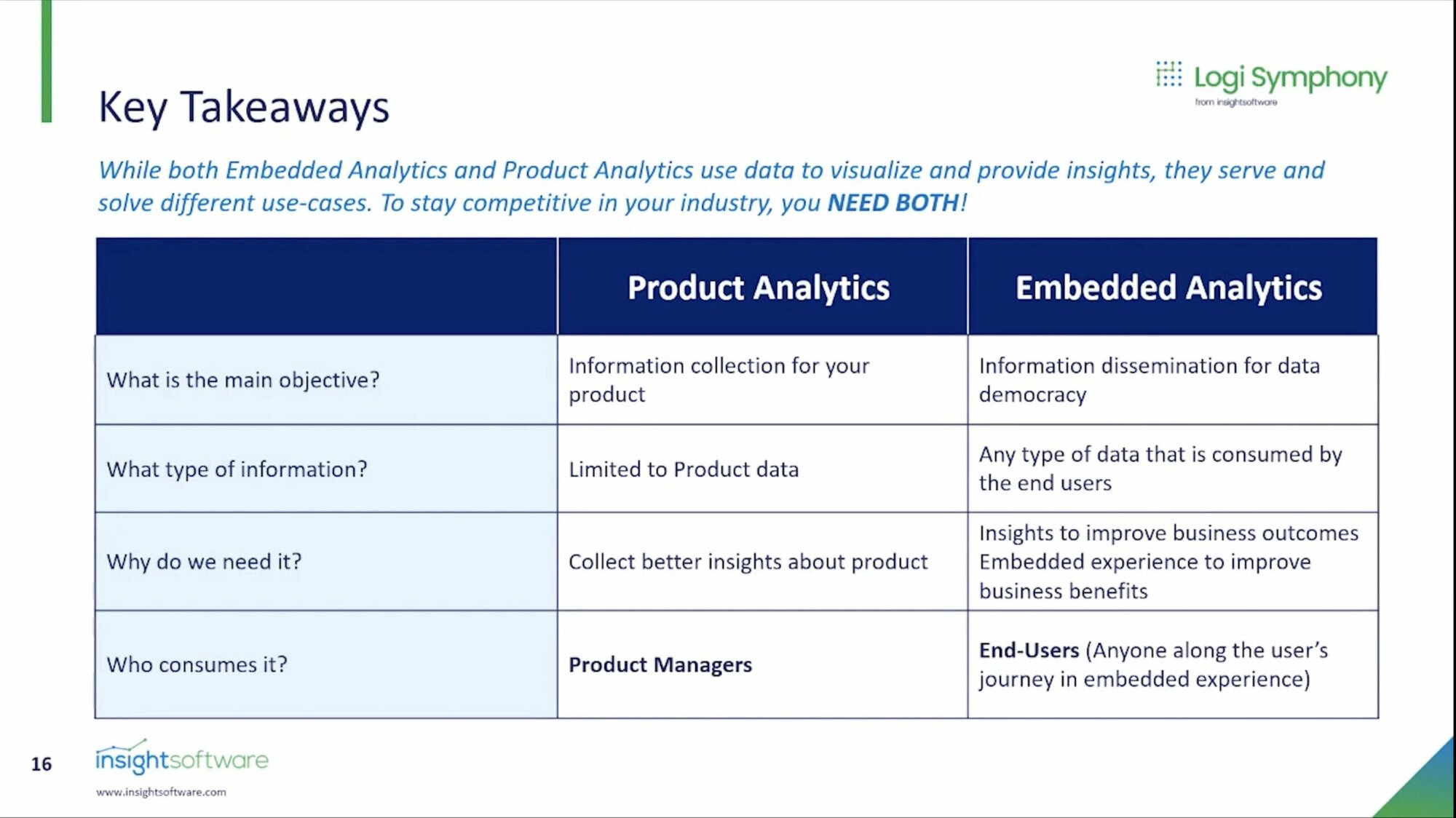In this spotlight session, sponsored by Sisense, Mia Isaacson, Senior Product Manager at Sisense, shares strategies for developing data products. Watch the video in full, or read on for the key points:
Why analytics? Strategy and impact
Mia opens by explaining the importance of analytics in product management. “89% of organisations rate embedded analytics as critical or very important,” she says. Additionally, 60% of analytics activities will be initiated, and 30% will be completed entirely within digital workplace applications.
How do you make a business case for building an analytics product? Mia shares an example of a company pitching this initiative. The case was broken down into three tiers: Vision, Strategy, and Key Results:
- Vision: Better learning experiences driven by data-led insights
- Strategy: Outcome-based analytics would drive more valuable conversations with clients
- Key Results: 50% (Yr1) and 100 (Yr2) of clients active
In addition, Mia explains that developing a data product can:
- Drive engagement
- Increase perceived value
- Increase expansion
- Provide favourable price dynamics
Types of data products
The world of data is vast and growing exponentially, so Mia went on to explain the most popular types of insights surfacing in data products.
Prediction / Projections / Forecasting
Having an understanding of what is going to happen with your product is extremely valuable to a business and a product team. “Everyone wants to predict the future. The better you can do this will benefit your product and users more,” Mia says.
Industry benchmarks / performance-based
By having an industry benchmark, users can have a pulse check of what is happening in the market and whether your product is above or below the market.
Anomalies
Building a product that presents anomalies can help users find changes in data and what they represent. Over time you can build patterns and trends that will help you be more responsive and reactive in certain situations.
Root cause analysis
The process of underlying causes of problems in a product can be an essential tool. Having accurate root cause analysis leads to change that limits failures in the future.
Feature clustering / Optimization
When there is a problem with a product, there may be multiple reasons why. Using a product that offers feature clustering helps teams to group problems together and hone in on a specific focus area.
Valuable perspectives
In all of the different types of data sets that businesses can use, Mia explains that there are two main groups that they fall into.
Expertise on the ground: Understanding the space more than everyone else and providing customers with all the information they need.
Eagle-eyes expertise from above: Building a product from this perspective can enable you to share insights your customers can’t see. For example, forecasting what trends lie ahead.
Surfacing the right insights
Once you have decided what insights you want to share, Mia explains that you should not instantly jump to the most advanced data set. Start with descriptive data points, then work up to prescriptive data. It’s important to weigh up the difficulty against the impact when building data products.
Creating an accessible data experience
As analytics are contextualised, you start to see a commingle of KPIs, facts, and activities, Mia explains. Building everything into the same interface enables a good user experience, which leads to high interaction. It ensures that users can see the full story, and all of the data that they need to make the most informed decisions, Mia explains.
Mia adds that analytics needs to be surfaced in a very native format, and it needs to make sense in terms of outreach. For example, an organisation can use Sisense to create a data dashboard but rebrand everything to match the company colours and logos for familiarity.
In addition, it’s important to cater a tool that’s compatible for developer teams. “Building a data product, creating composability for developers can be highly technical, but a composable approach reduces development time and helps to change and adjust small things.
Common business models
Mia explains how there are commonly three business models that tend to use predictive analytics:
- Expansion and retention: Mia says how this is the most common model for organisations that build data products. With this model, users will seek information about what is happening with their product that they can’t obtain anywhere else.
- Service tiers: A service tier is based on a pricing model that allows users to pay more for more valuable insights that you can provide.
- Adjacent Use Cases: If you have a core product while delivering your service, you can create new modules and data sets, and sell this adjacent to your main product.








